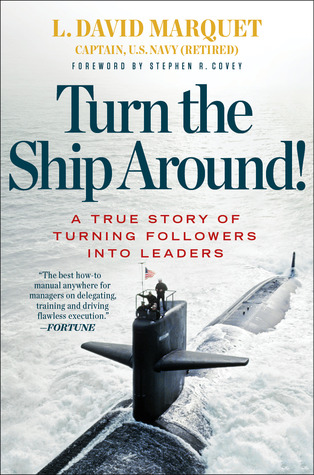More on this book
Community
Kindle Notes & Highlights
Read between
May 16 - May 20, 2020
Leadership is communicating to people their worth and potential so clearly that they are inspired to see it in themselves.
leadership is a choice, not a position.
One of the things that limits our learning is our belief that we already know something.
When the performance of a unit goes down after an officer leaves, it is taken as a sign that he was a good leader, not that he was ineffective in training his people properly.
First class petty officers are one rank below chief. They are the workhorses of the Navy, doing a tremendous amount of watch standing, hands-on maintenance, as well as training of the junior enlisted men. They are considered to be budding leaders.
My bosses, Commodore Mark Kenny and Rear Admiral Al Konetzni, Commander, Submarine Forces, Pacific (COMSUBPAC or CSP), were ready to give me all the encouragement I needed—and all the rope I needed to hang myself.
control, competence, and clarity.
the paradox of “caring but not caring”—that is, caring intimately about your subordinates and the organization but caring little about the organizational consequences to yourself.
From that moment on, at quarters the crew would gather around me and the khakis (officers and chiefs) would stand in back.
When you’re trying to change employees’ behaviors, you have basically two approaches to choose from: change your own thinking and hope this leads to new behavior, or change your behavior and hope this leads to new thinking.
SHORT, EARLY CONVERSATIONS is a mechanism for CONTROL. It is a mechanism for control because the conversations did not consist of me telling them what to do. They were opportunities for the crew to get early feedback on how they were tackling problems. This allowed them to retain control of the solution. These early, quick discussions also provided clarity to the crew about what we wanted to accomplish. Many lasted only thirty seconds, but they saved hours of time.
Instituting the Leader-Leader Model


